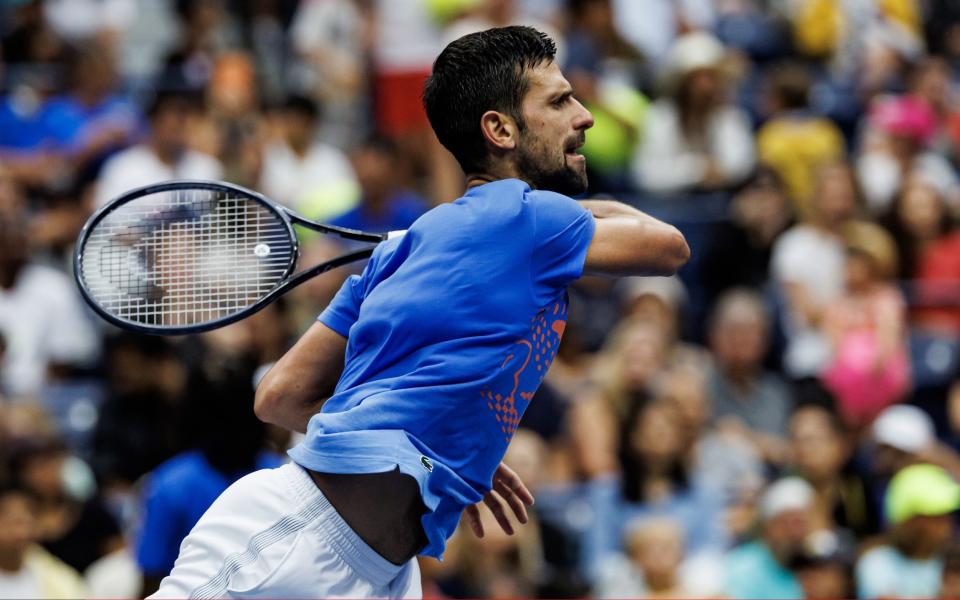Novak Djokovic has been galvanised by his rivalry with Carlos Alcaraz — and tennis should be scared


A week ago in Cincinnati, Novak Djokovic defeated Carlos Alcaraz in three hours 49 minutes, then burst out of his shirt in celebration. Here was tennis’ answer to the bodice-ripper: a contest that felt more like a bromance than a deadly rivalry.
Over the shortest of periods – just three months, in fact – Djokovic and Alcaraz have established themselves as the most riveting story in the sport. Much of the fun lies in their obvious enjoyment of what has quickly become a duopoly.
Both men are so superior to the rest of the field that, against the majority of opponents, they could probably win with a frying pan. Their only realistic opposition is each other. And yet, rather than resenting the one serious road-block in their path, each man is relishing the challenge.
“It’s a treat when you see two people that are just head and shoulders above everybody else, making each other hit shots that they never had to hit before,” said tennis legend Martina Navratilova, who is commentating on Monday’s US Open for Sky Sports.
“That’s why they enjoy it so much,” added Navratilova. “Because nobody else can push them to that. You can only hit great shots when you’re forced to hit great shots, and you have to do it three or four times in a rally. And then the point’s over, and now you get to do it again. Oh my God!”
Navratilova is well placed to comment. In the 1970s and 80s, she formed half of arguably the greatest rivalry in tennis history – a 16-year, 80-match duel with Chris Evert.
Yet there is one essential difference between Navratilova-Evert and Djokovic-Alcaraz. The former were contemporaries, born within two years of each other in the mid-1950s. The latter are about as far apart on the age scale as it is possible for two tennis pros to be. Alcaraz turned 20 during the Madrid Masters while his rival is 36. Despite a preternatural resistance to the ageing process, Djokovic cannot go on for ever.
As a result, there is a sense of urgency around these meetings, which brings its own electricity. In Djokovic’s case, he could easily have felt frustration at the advent of a player with Alcaraz’s gifts, so soon after he had seen off the rest of the Big Four. Instead, he is clearly delighted that he has a new giant to measure his skills against.
“I love competition,” said Djokovic on Friday. “It’s kind of a cat-and-mouse play really on the court. You’re trying to outplay or outsmart your opponent tactically, but then you have to fight with your own demons as well.”

For Alcaraz, too, this is a unique opportunity to learn from the best. In their battles over the past 15 years, the Big Four undoubtedly turbo-charged each other’s evolution, by testing out weaknesses and experimenting with tactics. Their mutual struggles combined with their natural gifts to place them in a separate category to the rank and file, so that they were literally playing a different ball-game.
Alcaraz can now take advantage of a similar fast-track, especially if he continues to meet Djokovic in every tournament they both enter (which has now happened at the French Open, Wimbledon and Cincinnati in quick succession). With each encounter, he is finding out more about pacing and energy management, areas where Djokovic has no peer. In future years, such lessons will no doubt help him hold off younger challengers of his own.
And yet, both men know that – because of the unusual timing – their rivalry will not prove to be career-defining. This may help to explain why there is a rare sense of freedom about the shot-making in their matches.
Let’s return to the aftermath of Cincinnati last Sunday night. It is surely no coincidence that Djokovic performed exactly the same shirt-shredding celebration in 2012, shortly after breaking the record for the longest grand-slam final with a 5hr 53min victory over Rafael Nadal. In his mind, Alcaraz is already a worthy successor to Nadal’s crown.
Cincinnati might not be as storied a tournament as Wimbledon – where Djokovic lost to Alcaraz over five see-sawing sets – but it does even up their head-to-head record at two wins apiece, while simultaneously creating a thrilling sense of unpredictability about what might happen next.
For tennis as a whole, there’s only one problem. Djokovic and Alcaraz have swiftly transcended the sport to such an extent that they have become the headline act.
Subconsciously, fans might be thinking “Wake me up when Novak plays Carlos again.” And if the US Open doesn’t finish with them meeting two weeks hence, it might feel like a bit of a squib.
